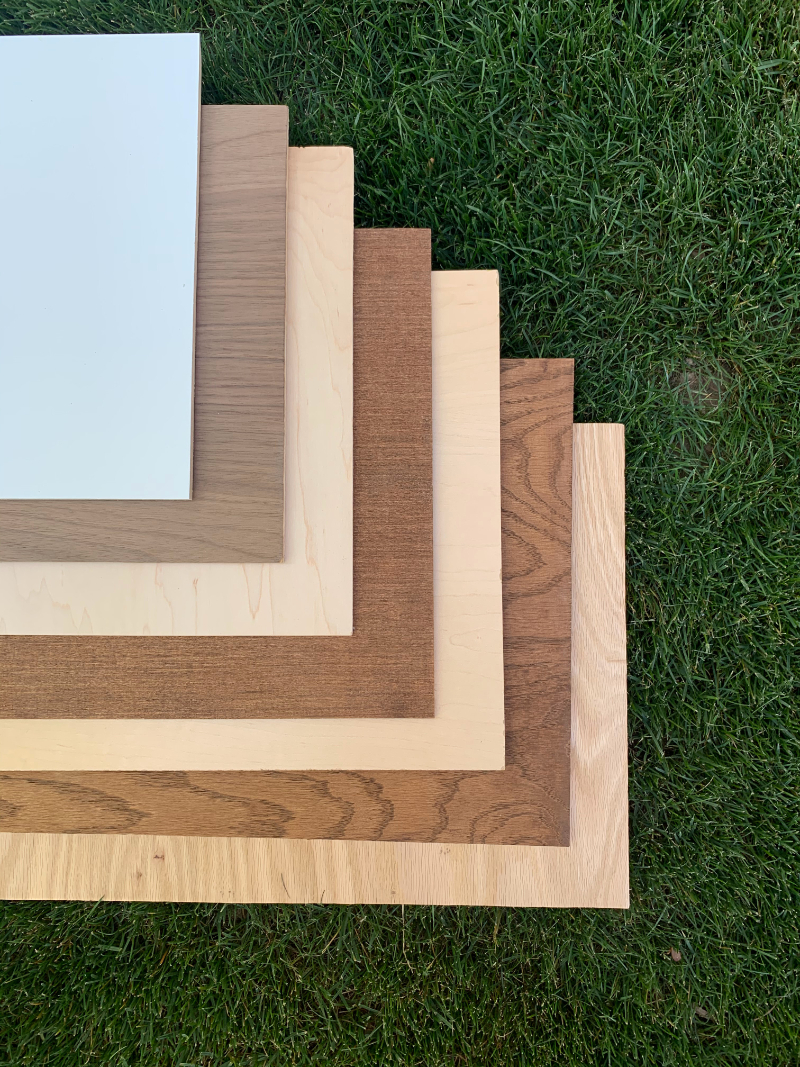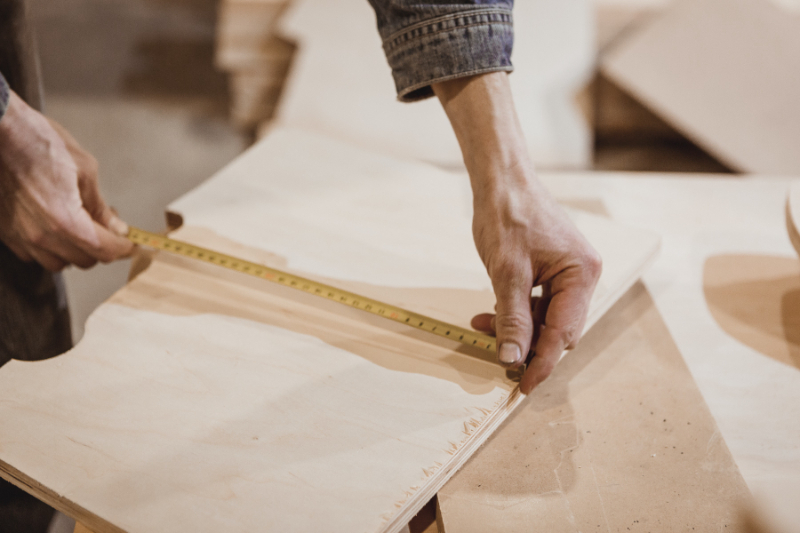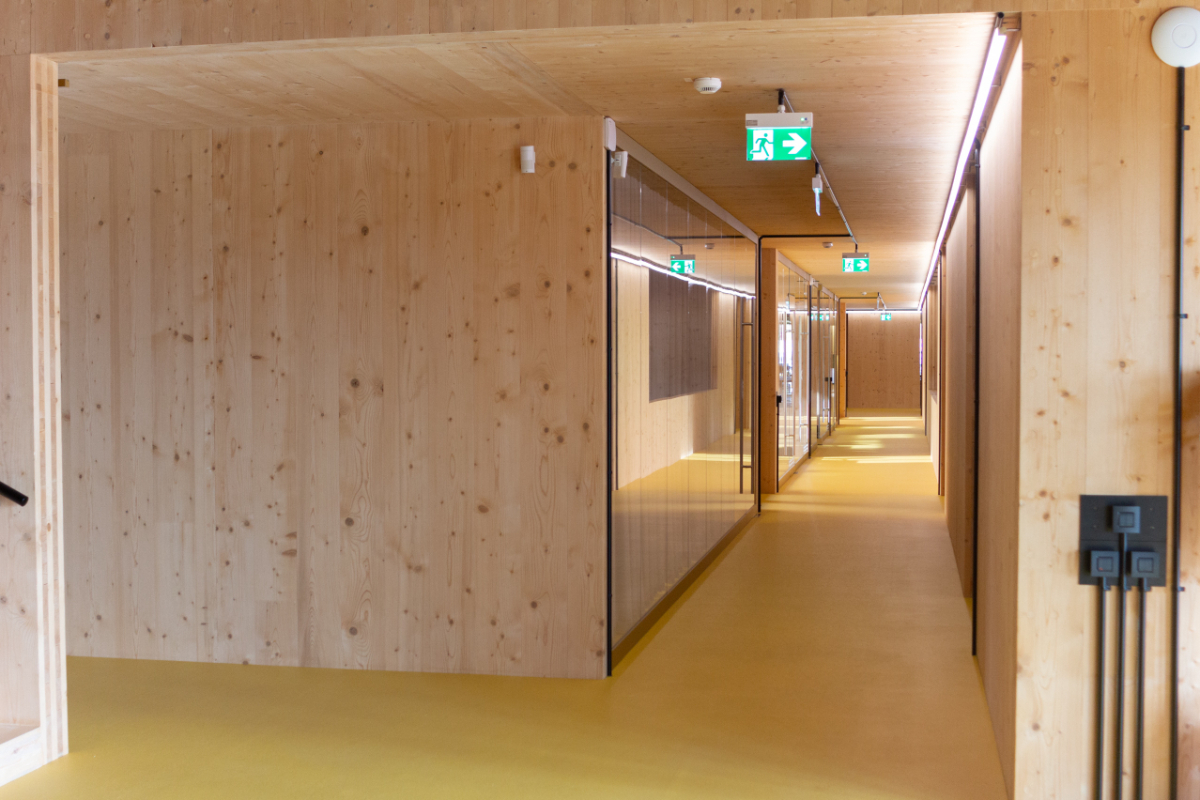Have you been asking: What are common uses of plywood? Find out more about the major uses of plywood and practical uses for plywood.
What Are The Major Uses Of Plywood?
There are many types of plywood used in building construction, and it remains a reliable material for many purposes. Due to its cost-effectiveness and ability to suit many construction projects, there is a good chance your interior walls include a level of plywood. Plywood consists of wood veneers being glued together, meaning plywood panels can be designed to remain as thin panels but can also have varying degrees of strength.
What Are The Advantages Of Plywood Timber?
Here are just a few examples of plywood being used throughout construction:
Structural Plywood
Structural plywood is one of the most common used to create permanent structural applications capable of resisting most weather and stress.
You can expect to find structural plywood being used as beams, subfloors, wall bracing, roof bracing, shipping crates and other internal structures.
However, you can also find structural plywood on external sites, although these will typically be treated with preservatives to ensure the weather conditions don't negatively affect the overall structure.

Exterior Plywood
External plywood is bound together by water-resistant glue. It can be sued as roof lining, outdoor flooring, walls and even stables, although in such instances, you are recommended to cover it with a layer of paint to protect against the sun.
On the stress grade table, this high-grade plywood offers F14 stress, which is the minimum working stress when considering bending: hence why it can be used in many external applications.
Interior Plywood
Unlike exterior grade plywood, internal plywood is mainly for aesthetics and cannot withstand the elements as much. The Urea Formaldehyde resin used inside is not good against water damage and cannot protect against moisture.
This is used on indoor walls, ceilings and interior cladding to create a certain look, with thin sheets being much weaker than thicker counterparts. For this reason, it should not be used on exterior walls and is ideal for homes and offices.
Marine Plywood
Marine plywood is next on the list, with this being a cost-effective material for waterproofing areas in need of protection against weather exposure.
Due to this, marine plywood is used on docks and boats, being an incredibly water-resistant building material.
However, it can also be used in interior locations, with bathrooms and kitchens utilising this waterproofing material.

Practical Uses for Plywood
There are many applications plywood can be used for, being created as softwood and hardwood for varying construction applications. From flooring plywood to particle board and furniture making, it has diversity.
Here are some examples of plywood being used practically:
Plywood panels are used to keep external wall sheathing secure and can help prevent vertical and horizontal shifting. This increased stability on exterior walls can perform well during high winds and earthquakes, ensuring the sheets of wood are fastened together.
Wood panelling and framing interior stud walls is another use of some types of plywood, although it isn't visible in many instances. However, nothing is stopping you from painting or staining most A-grade plywoods to give a natural wood finish.
Most commonly, plywood is used in thick sheets to sheath roofs or use as subfloors on internal projects. When used in flooring, tongue-and-groove edges may be present to keep the planks strong and allow them to slot together to carry the designated load.
This similar structure can be replicated when used in roofing, using large sheets to act as a durable layer before tiles are installed.
Many eaves and soffits can be covered with plywood skins or even made from plywood themselves during construction. Engineered wood can be used to construct sheds and garages and act as temporary floors too.
The optimum appearance and finish of soffits made from plywood can be achieved by using medium-density overlay (MDO) or sanded A-grade faces.
Plywood is a suitable building material for interior furniture, with durability being one of the main benefits. Being an adaptable material, it can be used for dressers, wardrobes, shelves, bookshelves, console tables, media centres and more.
A-grade plywood is a cost-effective solution for anyone that wants to customise their homes, especially when considering painting and staining options.
Whether it's bathroom or kitchen cabinets, plywood is a great building material for cheap yet effective cabinets. More durable than MDF or chipboard, plywood can last longer and won't split as often, especially when being overloaded.
Plywood is commonly used throughout DIY construction projects, with many rabbit hutches, doghouses, skateboard ramps, and more made by the widely available plywood.
Not all plywood is designed for outdoor use due to the varying resistance against atmospheric moisture and weather, but workbenches, sawhorses and storage bins are familiar to many home DIYers.
There's a reason plywood isn't used as main flooring and only sub-flooring in construction projects, and that's because it doesn't look nice enough, and there are more durable materials available.
While plywood is cost-effective for many jobs, general wear and tear will affect it over time. It is perfect for subflooring, though, due to the cross-grain pattern, remaining flexible and bearing weight.
There is no reason why plywood cannot be used in shed design and installation, and it regularly is in many cases. Plywood is inexpensive and durable, meaning any items you choose to store inside the shed will remain dry.
Solid wood is more durable but can be more expensive and harder to work with, but by using several inches of plywood, you can have a cheap and simple shed in no time.
Because of its flexibility, plywood is made into skateboard ramps, as the required curved shape can only be created by this wood. Unlike other woods, when bent, the cross-grain pattern allows the plywood to keep its strength, meaning it can hold the weight of skaters.
Pressure-treated plywood has a clean finish and is extremely flexible for differing sizes.
There are few things that plywood cannot be made into, with many guitars and birdhouses, benches, small tables and footstools being created and stained using this bendable wood. Most guitars sold in shops are made of plywood, as the bend can be sustained while remaining strong.
Types Of Plywood
Plywood consists of wood veneers glued together to make a solid sheet with varying strengths and durability. They are made from douglas fir, redwood, pine and other tree types. They are used for various structural purposes, typically graded into four groups:
Class 1 - Strictly Internal
Class 2 - Interior grade
Class 3 - Exterior grade
BS10 88 - Marine Plywood
They are made out of layers, typically either three or five plies surrounding the central core. The thicker the ply, the more flexible the sheet, and exterior grade plywood is the most weather and boil-proof, meaning it'll resist the most elements. All plywood is oriented with the wood grain perpendicular to the adjacent layer, giving it the name cross-graining.
An odd number of plies is typical in plywood, unlike laminated veneer lumber (LVL). Plywood is prepared by steaming or dipping in hot water, being peeled into thin plies by a lathe machine and formed into large sheets, where they can be bent and morphed into shape.
Are you looking for timber delivery in Manchester and the surrounding areas? We offer a range of timber cut to size for Manchester, Liverpool, Preston, Oldham, Stockport, Warrington and the surrounding areas.

